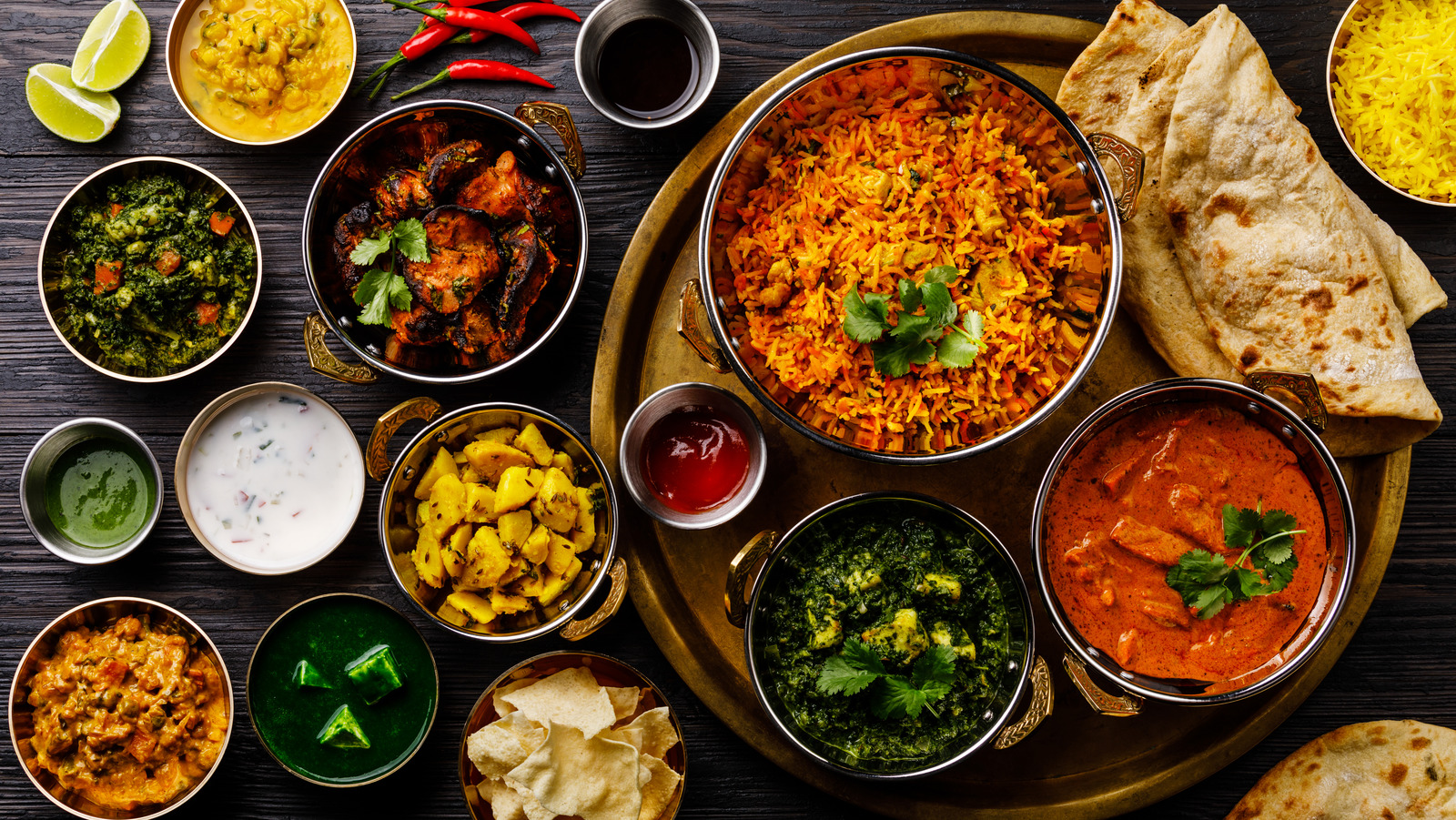Indian meals via tray is a fascinating culinary custom that transports you on a gastronomic adventure around the numerous areas of India. From the colourful streets of Mumbai to the serene backwaters of Kerala, each and every tray tells a novel tale of tradition, heritage, and culinary artistry.
This custom dates again centuries, when meals used to be served on massive steel trays referred to as “thalis.” Thalis weren’t simply serving platters but in addition an emblem of communal eating and hospitality. Through the years, the thali advanced into a complicated presentation, showcasing a symphony of flavors, textures, and hues.
Permutations and Regional Specialties: Indian Meals Through Tray

Indian meals trays exhibit the various culinary panorama of India, with each and every area contributing its distinctive flavors and elements. Cultural influences and native traditions play a vital position in shaping those permutations.
North India
- Tandoori dishes: Marinated meats grilled in a clay oven, reminiscent of hen tikka, paneer tikka, and fish tikka.
- Curries: Wealthy and creamy curries like butter hen, dal makhani, and palak paneer.
- Breads: Flatbreads like naan, roti, and paratha.
South India
- Rice dishes: Idli, dosa, and uttapam, made out of fermented rice and lentils.
- Curries: Tangy and highly spiced curries like sambar, rasam, and coconut-based curries.
- Chutneys: Accompaniments like coconut chutney, tomato chutney, and coriander chutney.
East India
- Fish dishes: Mustard-based fish curries, smoked fish, and fish arrangements with fermented bamboo shoots.
- Rice dishes: Steamed rice with lentils, and pulao.
- Chocolates: Sandesh, rasgulla, and chhena poda.
West India, Indian meals via tray
- Seafood: Fish curries, prawn arrangements, and shellfish dishes.
- Vegetarian dishes: Gujarati thali with dhokla, fafda, and khandvi.
- Cakes: Puran poli, modak, and shrikhand.
Fashionable Interpretations and Inventions

The Indian meals tray is present process a modern renaissance, as cooks and restaurateurs reimagine conventional displays to fit trendy tastes and aesthetics. Cooks are pushing the limits of conventional delicacies, experimenting with cutting edge elements, cooking ways, and plating types to create visually surprising and palate-pleasing trays.
One notable development is the incorporation of world flavors and elements into Indian meals trays. Cooks are mixing conventional Indian spices and strategies with parts from different cuisines, reminiscent of Southeast Asian, Heart Jap, and Ecu, to create distinctive and flavorful dishes.
This cross-cultural fusion is leading to thrilling new mixtures that enchantment to a much wider vary of palates.
Inventive and Distinctive Tray Designs
Along with culinary inventions, cooks also are experimenting with inventive and distinctive tray designs. Long gone are the times of easy steel or plastic trays; lately’s Indian meals trays are artistic endeavors in themselves. Some cooks are the use of personalized trays made out of sustainable fabrics reminiscent of bamboo or reclaimed wooden, whilst others are choosing trays with intricate designs and patterns that mirror the cultural heritage of India.
One notable instance is the “thali platter,” a big round tray divided into compartments for various dishes. This design lets in diners to pattern numerous dishes in a single sitting, making it a well-liked selection for particular events and celebrations.
FAQ Nook
What’s the importance of serving Indian meals via tray?
Serving Indian meals via tray has deep cultural and ancient roots. It symbolizes communal eating, hospitality, and the sharing of meals amongst friends and family.
What are the crucial parts of a standard Indian meals tray?
A conventional Indian meals tray most often comprises numerous dishes reminiscent of rice, curries, breads, and accompaniments. The secret is to stability flavors and textures, making a harmonious symphony of tastes.
How does the presentation of Indian meals via tray range throughout areas?
Indian meals via tray reveals regional permutations influenced via native traditions and cultural practices. For instance, a thali from Punjab will range from a thali from Kerala in relation to the dishes incorporated and the full presentation.
What are some trendy interpretations and inventions in Indian meals via tray?
Recent cooks are reimagining conventional Indian meals via tray displays to fit trendy tastes. They experiment with new elements, plating ways, and fusion dishes, pushing the limits of culinary creativity.


